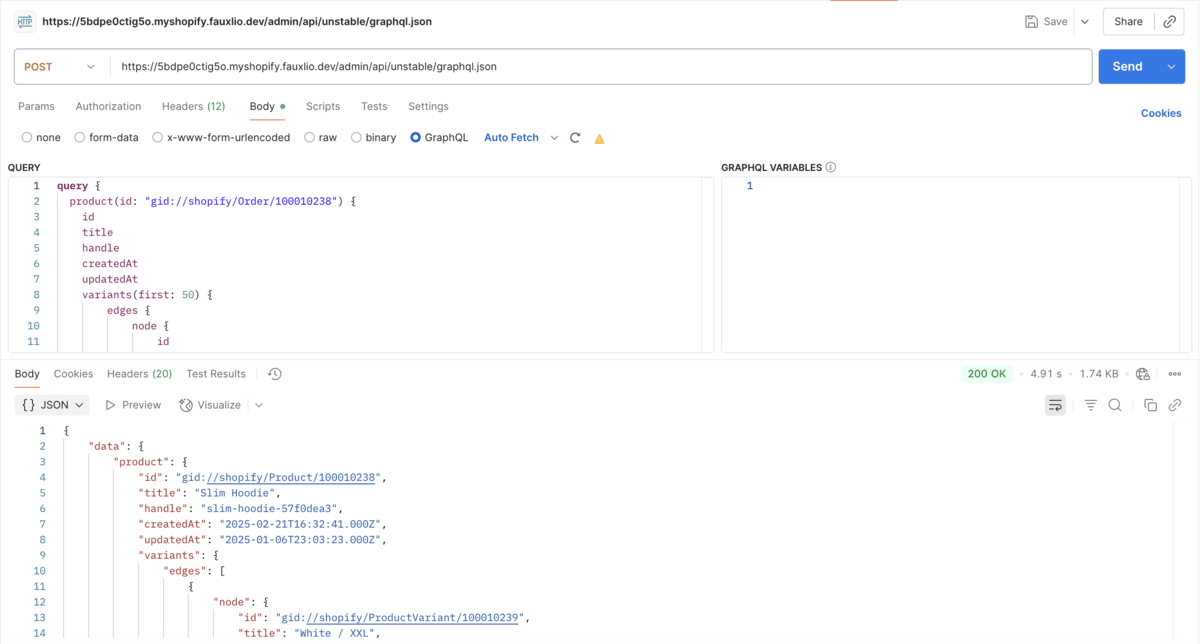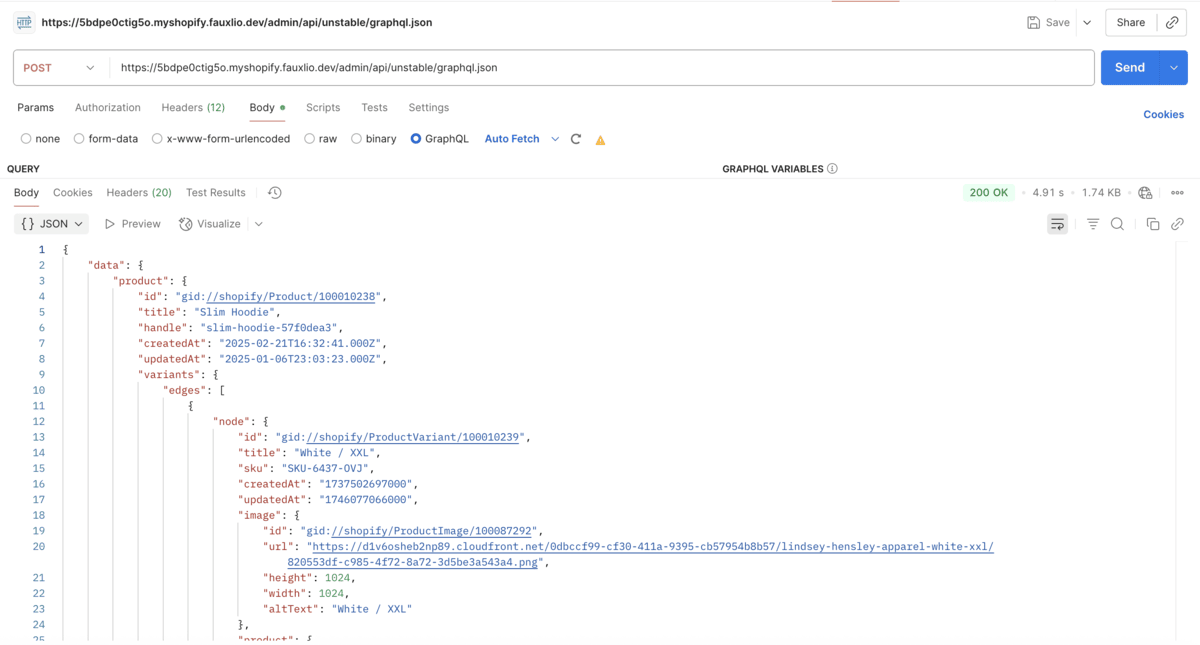Getting Started with Shopify
Fauxlio mirrors Shopify's API structure, making it easy to develop, test, and validate your apps against realistic, synthetic data - without touching a live Shopify store.
How It Works
- Create a Fauxlio Account: Sign up at app.fauxlio.dev and generate an API key.
- Connect via Shopify Client Libraries: Use the official Shopify API libraries (Node, Ruby, Python, PHP) or Postman.
- Start Querying: Call Fauxlio's endpoints just like you would Shopify's API. We handle the data generation.

API Base URL
All API calls are made to:
https://{your_subdomain}.myshopify.fauxlio.dev
Include your API key in the X-Shopify-Access-Token
header:
curl -H "X-Shopify-Access-Token: YOUR_KEY" https://6fvao84oxdo4.myshopify.fauxlio.dev/admin/api/2025-07/graphql.json
Available Resources
Example: Fetching Products
// Using Shopify's Node library
import { createAdminApiClient } from '@shopify/admin-api-client';
const client = createAdminApiClient({
storeDomain: '6fvao84oxdo4.myshopify.fauxlio.dev',
apiVersion: 'unstable',
accessToken: process.env.FAUXLIO_API_KEY,
});
const products = await client.request(`
query {
productVariants(first: 50, query: "created_at:>'2025-06-27T11:39:20Z'", sortKey: ID) {
edges {
cursor
node {
id
title
sku
createdAt
updatedAt
product {
id
vendor
productType
status
createdAt
updatedAt
publishedAt
}
image {
id
url
width
height
altText
}
inventoryItem {
id
duplicateSkuCount
harmonizedSystemCode
legacyResourceId
locationsCount
countryCodeOfOrigin
provinceCodeOfOrigin
requiresShipping
sku
tracked
createdAt
updatedAt
inventoryLevels(first: 1) {
pageInfo {
hasPreviousPage
hasNextPage
startCursor
endCursor
}
edges {
node {
id
createdAt
updatedAt
location {
id
name
address {
address1
address2
city
province
provinceCode
country
countryCode
zip
}
}
quantities(names: ["available", "on_hand"]) {
id
name
quantity
updatedAt
}
}
}
}
}
}
}
pageInfo {
hasPreviousPage
hasNextPage
startCursor
endCursor
}
}
}
`);
console.log(products);
